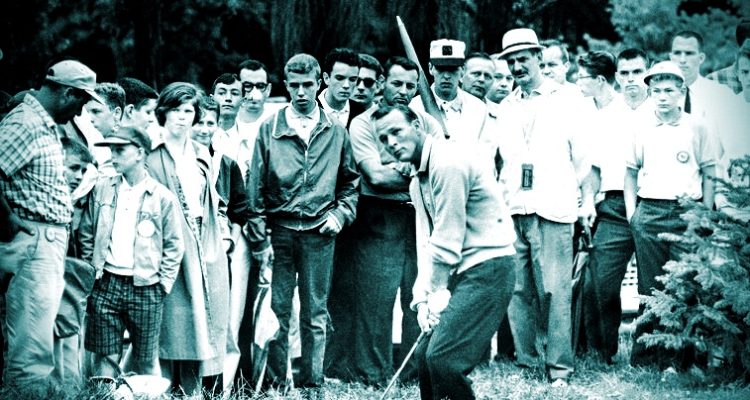Arnold Palmer Recalled by Oglebay’s Randy Worls
He knew it would spoil, but the child didn’t seem to care, so Arnold Palmer signed his banana peel and handed it to the young man.
That’s the kind of man Palmer was, according to an old friend named Randy Worls, a former general manager of Oglebay Park who still works with the Oglebay Foundation today.
“That was during the Bay Hill Classic when he was eating that banana at one point, and when he was finished with it, he started walking over to a trash bin, and this little boy said, ‘Mr. Palmer, will you sign that for me?’ Arnold said, ‘Young man, in about an hour this is going to black,’ but that little boy didn’t care,” Worls explained. “Arnold just wanted to make the child happy, so he signed it and handed it to him.
“He was a good man,” he continued. “His victories didn’t go to his head and neither did his fame, and that’s just a couple of the reasons why this is a very sad time for me and my family.”
That is because at the age of 87 Palmer passed away Sunday in Pittsburgh. According to Alastair Johnston, the chief executive officer of Arnold Palmer Enterprises, the Hall of Fame golfer was admitted to a Pittsburgh hospital late last week to undergo cardiovascular tests but weakened during the last few days. Palmer was a survivor of prostate cancer, which was diagnosed 19 years ago.
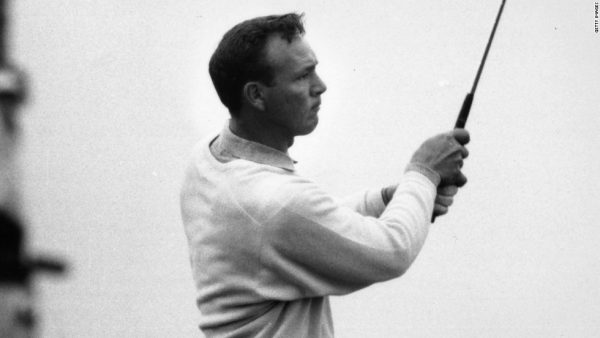
The native of Latrobe, Pa., became a fixture on the PGA Tour in 1955, and although he never won the PGA Championship Palmer, captured four green jackets at Augusta National, the British Open in 1961 and 1962, and the U.S. Open in 1960. Palmer entered at least one PGA Tour event every season for 52 consecutive years and completed that string with the 2004 Masters, and he won 10 tournaments while competing in the 50-and-older Champions Tour.
Worls first met Palmer 53 years ago when the legend was hired to travel to Oglebay Park for a benefit for a Wheeling-based non-profit organization.
“Arnold came here in 1963, when he played an exhibition round for the Junior League in Wheeling,” he recalled. “He had just won his second Masters, and I was assigned to be his chauffeur. We got him in, and then I took him to Wilson Lodge so he could change into his golf clothes, and then he went to the course to play the match.
“So we had time to talk, and he was just a nice person. That was my very first impression of him,” he continued. “The deal was that the Junior League got the first $300 from the ticket sales so they could promote the event, and then Arnold received the next $1,500, and then Junior League received the next $1,500 in sales. After that, the Junior League and Arnold split the rest.”
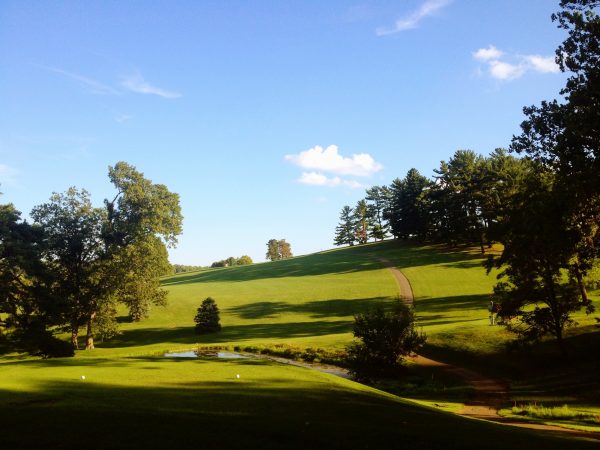
Worls can remember the round, too, one during which Palmer shot a 62 on the park’s Crispin Golf Course, (at the time a course record).
“He was playing what he called a friendly match with A.J. Gray Jr. and two other players, and A.J. was a long ball hitter, and he was trying to equal Palmer off the tee,” he remembered. “Well, about the fourth or fifth hole, Palmer said, ‘Oh, we’re going to make this a driving contest,’ and that’s when he started taking full swings at the ball.
“That’s also when he decided he was going to play the game with A.J. and the others,” he said. “So he was cranking out some really long drives, so that was a lot of fun to watch. It was incredible and the people in attendance were in awe because most of them had never seen a person hit a golf ball like Arnold Palmer could.”
Before Palmer stopped playing competitively in 2004, Worls inquired about asking the pro golfer to return to Oglebay Park for another fundraiser, and that’s when he realized the true impact the native of western Pennsylvania had on professional golf.
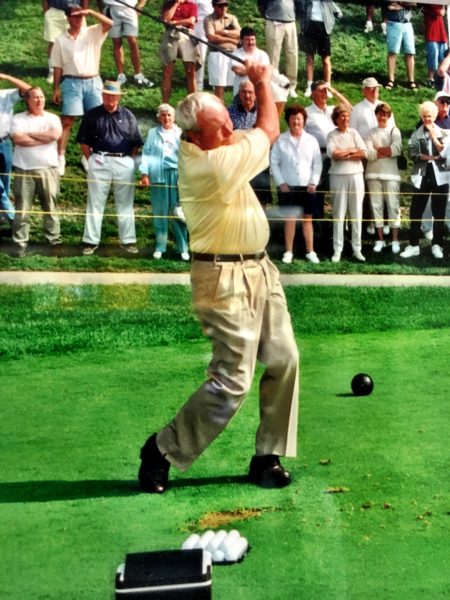
“I was speaking with his business manager, and I asked what it would take to bring Arnold back to the park for another exhibition round and then stay for dinner so we had the chance to raise some additional money for the parks, and he told me that they were then charging $75,000 for 18 holes of golf and another $25,000 if he stays for dinner,” Worls recalled. “I am not saying this in a negative way; trust me. He just impacted the game of golf in such a way that those were the prices.
“As he proceeded with his career, and the crowd grew on the course and on television, the purses grew, and that impacted the rest of the business of golf,” he explained. “So, of course, Arnold started getting more for those kinds of appearances, and he alone was the person who brought golf into the big time, and now today’s golfers make $10 million for a championship win.”
His legacy is one that travels beyond his seven major championships and 62 PGA Tour wins, and although Palmer never embraced the fact golf fans referred to him as the game’s “king,” the moniker stuck. Only four other players claimed more PGA Tour titles, including Sam Snead, Jack Nicklaus, Ben Hogan, and Tiger Woods.
Palmer also was a successful businessman, owning companies involved with course design, a line of golf apparel, and a distinguished wine collection. He also purchased the Bay Hill Club & Lodge after making his winter home in Orlando, Fla. In 2007, the PGA Tour changed the tournament’s name to the Arnold Palmer Invitational.
And yet, Worls insisted, Palmer remained grounded, unaffected by the success and money, and, well, common.
“A lot of Arnold’s best friends were mechanics and grass cutters that worked on the courses he played most often. That’s just the kind of person he was despite his level of success on an international level,” he explained. “I remember him talking about his dad who was the superintendent for a golf course in Latrobe. Although he cared for the course his father was never allowed in the clubhouse, and that always bothered Arnold.
“So when he arrived to the point in his career where he was making pretty big money, he went back and bought the course,” Worls said. “As soon as he did, he opened it all up to the workers of the course out of respect to his father. He was that type of guy; he really was.”
It was that upbringing, Worls believes, that allowed Palmer to remain true to the morals taught him by his mother and father.
“Although he was one of the best golfers in the world for a lot of years, he was a common man who treated everyone the same way, and that was with respect,” said Worls. “He never wanted any special treatment despite the fact he changed the game of golf forever.
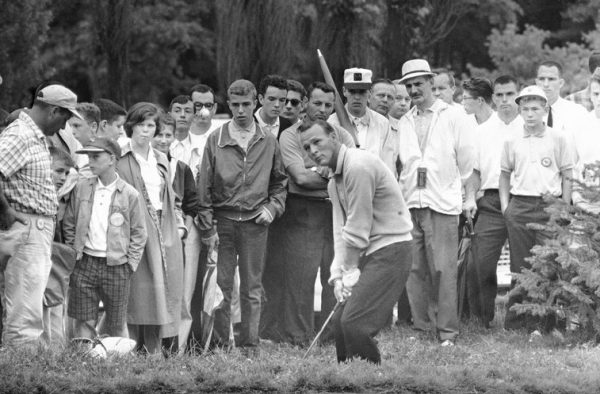
“You know, he may have been a common guy, but he also could get in to the see the president whenever he wanted, and he was comfortable in any situation,” he continued. “He could be in a bar on a corner with a bunch of guys from a steel mill to the President of the United States.”
Years later Worls would come to meet Arnold Palmer once again before the construction of a new championship golf course on Oglebay grounds. That is because Palmer and his team designed the par 71, $10-million layout that features six par-three holes, seven par-fours, and five par-five holes. Five holes are situated in the same area where the Jones-designed course is located, and the other 13 are located on 140 acres across W.Va. Route 88.
“One evening when he was in town, he sat on my back porch during a fundraiser event, and we had about 100 people there. Well, he stood there and had a photo taken with every single person in attendance,” Worls said. “When the photos were ready, we sent them to him, and he sat down to personalize every single one of them. He didn’t have to do any of that, but he did.
“Then when he was at Wilson Lodge for the opening of the Palmer Course, he again spent a lot of time speaking with everyone, and as he was leaving, a lady came up to him and started to reminisce with him because she and her husband had followed his career quite a bit,” he continued. “They talked for about seven minutes, and we left. Two days later I received a certified check for $1 million from that same lady because of how kind Arnold was.”
Palmer was born Sept. 10, 1929, in Latrobe, Pa., the oldest of four children. Palmer’s first wife, Winnie, died in 1999. They had two daughters, and grandson Sam Saunders plays on the PGA Tour. Palmer married Kathleen “Kit” Gawthrop in 2005.
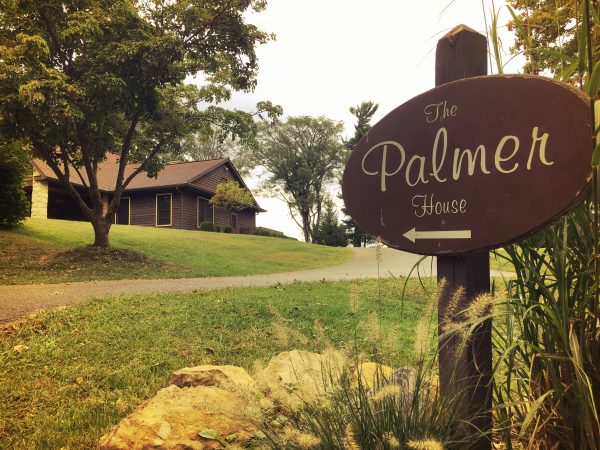
He was awarded the Presidential Medal of Freedom by President George W. Bush in 2004, and then Palmer was honored with the Congressional Gold Medal eight years later. “Arnie’s Army” was a real thing at the golf events in which he participated, and those in the game for the past four decades consider him the first “grip-it-and-rip-it” golfer in the history of the storied game.
But even when he was a guest at 1600 Pennsylvania Ave., Palmer still made time to sign autographs for anyone who requested them, and that made a difference to Worls and other Oglebay officials when selecting the name to label the resort’s newest golf course.
“We could have had Jack Nicklaus or a bunch of others come in and design the course, but we wanted Arnold Palmer because not only was he more local to this area, but Arnold Palmer was golf,” Worls reported. “We just felt having Arnold’s name on anything would be to our advantage. That’s also why one of estate houses was named in his honor when it was completed in 2006.
“The man never took any credit for his accomplishments, either,” he continued. “He was just a guy named Arnold Palmer, who just so happen to golf. That’s why, for me, this is a very sad time for me and for the Oglebay family. He was a genuine human being who cared about people, and I’m sad he and I will not have another one of those talks we used to.”
(Photos provided by LeeRoy, Oglebay Resort and Conference Center and Wikipedia)


